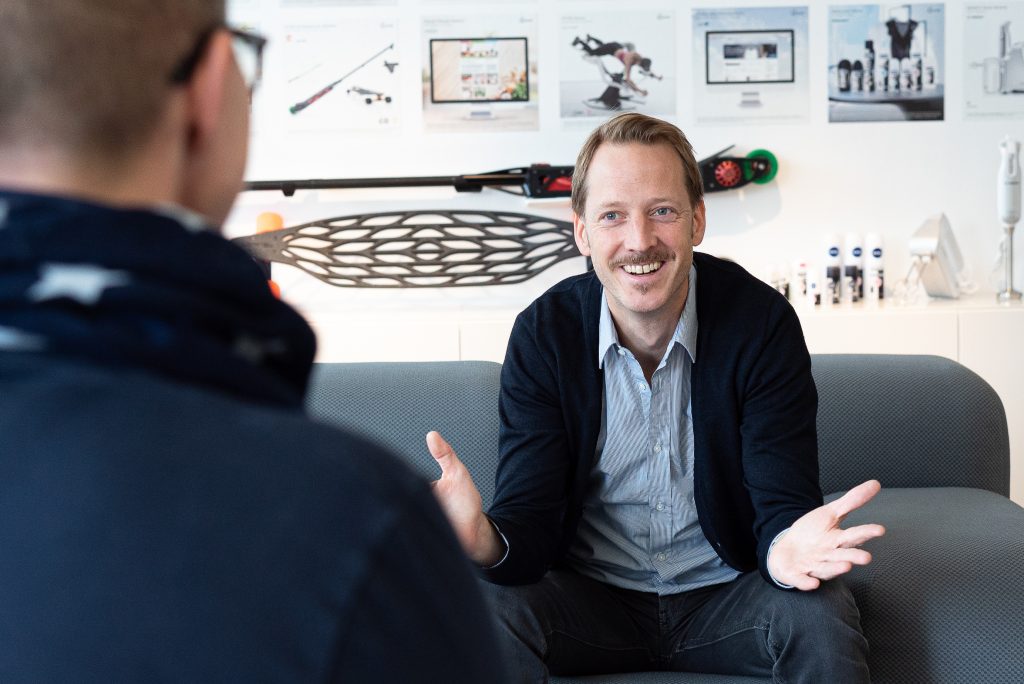Why are the HYVE units merged?
Michael Bartl
We always want to align ourselves with market developments and change is one of the few constants here. The pressure on companies to innovate has risen dramatically as a result of the rapid development of new technologies, the advancing digitalisation and the changing working environment.
The transformation of business models has become a central question of survival and future for companies in almost all industries. 10 years ago, this was definitely not as noticeable for clients as it is today. The subtasks necessary for innovation were driven by their specialist departments of market research, design, product development, software or customer experience and subsequently often reassembled with high friction losses. A holistic innovation budget was the exception. Of course, this logic was also reflected in our organizational model. However, today’s transformation offensives can hardly be mastered in this way.
How would you describe today’s demands on innovation?
Michael Bartl
The sovereign handling of uncertainty in a rapidly changing world and the ability to implement radical changes have become central success factors. However, this requires that all disciplines in agile and lean structures have to mesh like gears. Inventiveness, specialist knowledge and customer focus must be paired with broad knowledge in the field of innovation consulting in order to tackle innovation holistically. The inertia of the stage-gate processes must give way to the speed of development methods based on the lean-startup principle. This is the only way to leave established paths of innovation development. The separation between strategy and workbench, which is still frequently practised in management consultancies and technology service providers, is simply no longer conducive to the creation of new ideas. This change in the innovation landscape has finally led us to bundle the forces of the distributed HYVE units.
Can you tell me a little more about the details of the HYVE model?
Michael Bartl
The previously independently organized sub-disciplines of innovation are brought together in an agile organizational model of innovation in order to serve the need for holistic innovation and transformation offensives from a single source. One can imagine this as an update to a modern operating system, with new elements in the areas of strategy, structure, workflow and interdisciplinarity.
The principle of “aligned autonomy”, i.e. the autonomy of teams and employees oriented towards a common goal, known from modern organizational theory, is always in the focus. The project work is characterized by a “collaborative culture”, the specialists find their professional home in different innovation practices. The HYVE startups, the own HYVE crowd with many thousands of innovation enthusiasts and the cooperation partners as well as universities are also connected to our new operating system and complete the HYVE ecosystem for innovation.

Any changes for HYVE’s customers and partners?
Michael Bartl
More than ever, our Innovation-as-a-Service portfolio is geared towards seamlessly supporting companies from the initial idea through to market launch or the establishment of new units and start-ups. At HYVE, the service modules consumer insights, development of physical and digital products and services, product design, crowdsourcing, innovation consulting and startup building for corporates are closely interwoven both in terms of content and personnel. Furthermore, we are driven to live up to our reputation with our customers as a leading innovator. A few years ago, for example, we began to systematically advance the focus area of AI-supported innovation. We share our scientific findings, practical applications and our own founding experiences with our partners in order to jointly develop what is probably the largest field of innovation of our time.




